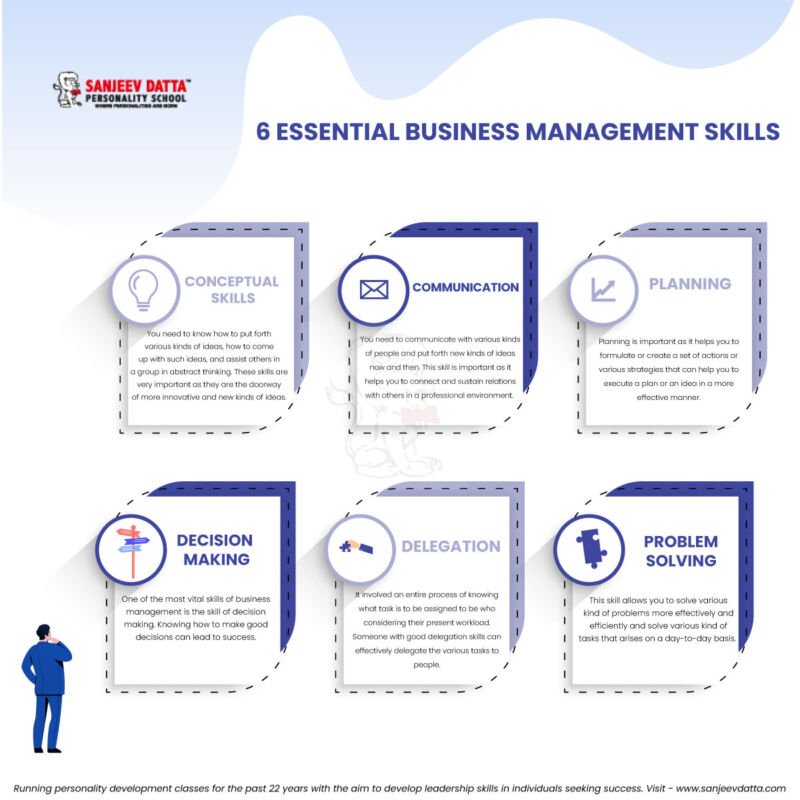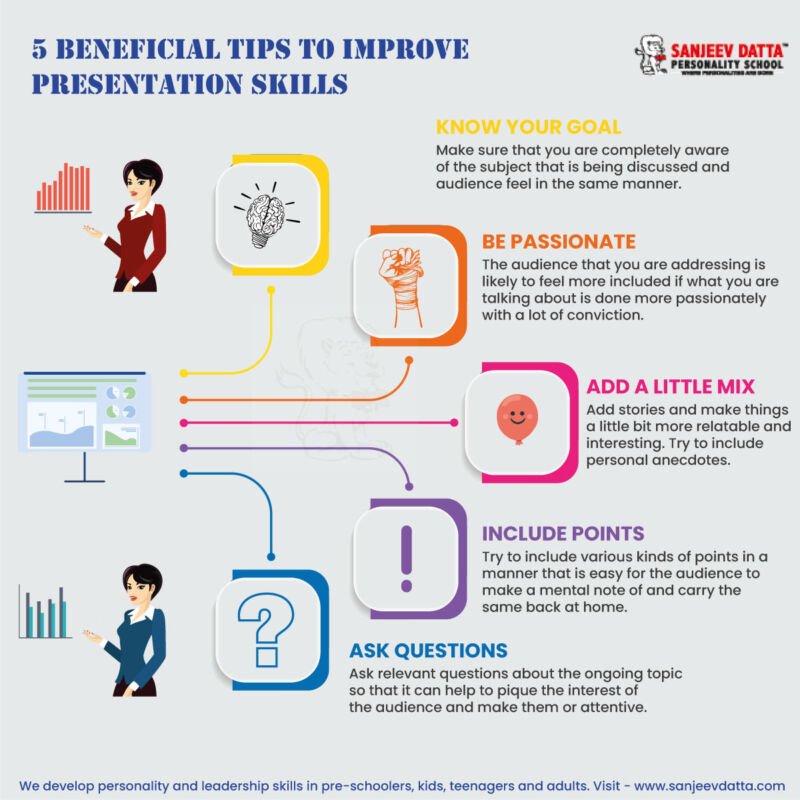In today’s rapidly evolving workplace, where artificial intelligence disrupts industries overnight, remote work reshapes team dynamics, and career paths zigzag rather than climb straight ladders, professional agility has emerged as the defining characteristic separating thriving careers from stagnant ones. Yet most professionals have never systematically evaluated their own agility, relying instead on vague self-assessments or waiting for crisis moments to reveal gaps in their adaptability. Understanding the ways to evaluate your professional agility provides the self-awareness foundation for intentional development, strategic career positioning, and resilience in the face of constant change.
Professional agility encompasses far more than simply being flexible or willing to change. It represents a complex constellation of skills, mindsets, and behaviors, including learning velocity, emotional regulation under pressure, perspective-shifting capacity, relationship navigation across contexts, and the ability to thrive in ambiguity rather than merely tolerate it. These capabilities determine whether you’re positioned as indispensable talent or a replaceable commodity, whether you lead transformations or resist them, and whether disruption creates opportunity or threat in your career trajectory.
This comprehensive guide presents proven frameworks and practical assessment methods for evaluating your professional agility across multiple dimensions, identifying specific development areas, and benchmarking your capabilities against the demands of modern professional environments. Whether you’re early in your career, building foundational agility, or a seasoned professional seeking to remain relevant in changing markets, these evaluation approaches provide the clarity needed to direct your development efforts strategically.
Understanding Professional Agility: The Core Dimensions
Before evaluating your agility, it’s essential to understand what you’re actually measuring. Professional agility comprises five interconnected dimensions that together determine your adaptability and resilience.
Learning Agility: Your Velocity of Skill Acquisition
Learning agility represents how quickly and effectively you acquire new knowledge, skills, and competencies when facing unfamiliar challenges. This goes beyond intelligence or education—it’s about extracting lessons from experiences, applying learning across contexts, and continuously updating your mental models as new information emerges.
Key indicators of learning agility:
- Speed of mastering new tools, systems, or methodologies
- Ability to recognize patterns across different situations
- Comfort with learning in public and making mistakes
- Seeking feedback and implementing it rapidly
- Transferring knowledge from one domain to another
- Curiosity driving exploration beyond required learning
Mental Agility: Cognitive Flexibility Under Pressure
Mental agility encompasses how effectively you think through complex problems, shift perspectives, challenge assumptions, and generate creative solutions when facing ambiguity or constraint. It’s your cognitive operating system’s capacity to run multiple mental programs simultaneously.
Key indicators of mental agility:
- Holding contradictory ideas simultaneously without discomfort
- Quickly pivoting between big-picture and detail perspectives
- Challenging your own assumptions before defending them
- Generating multiple solution approaches to problems
- Comfort with ambiguity and incomplete information
- Strategic thinking balancing short- and long-term considerations
People Agility: Relationship Navigation Across Contexts
People agility reflects your effectiveness in building relationships, reading social dynamics, adapting communication styles, and navigating diverse personalities and organizational cultures. In collaborative work environments, this dimension often determines career progression more than technical expertise.
Key indicators of people agility:
- Building rapport quickly with diverse personality types
- Reading room dynamics and adjusting approach accordingly
- Giving and receiving feedback constructively
- Navigating conflict without damaging relationships
- Influencing without formal authority
- Adapting leadership style to team and situation needs

Change Agility: Resilience During Disruption
Change agility measures how you respond when environments, priorities, or strategies shift unexpectedly. Rather than merely tolerating change, highly agile professionals leverage disruption as an opportunity for growth and repositioning.
Key indicators of change agility:
- Maintaining performance during organizational transitions
- Viewing change as an opportunity rather than a threat
- Letting go of outdated approaches without attachment
- Experimenting with new methods despite uncertainty
- Supporting others through change rather than resisting collectively
- Recovering quickly from setbacks or failures
Results Agility: Delivering Under Varied Conditions
Results agility encompasses your ability to deliver outcomes across different situations—with varying resources, timelines, team compositions, and constraints. It’s about consistent performance regardless of context, rather than excellence only in ideal conditions.
Key indicators of results agility:
- Meeting objectives despite resource constraints
- Performing effectively in both individual and team contexts
- Delivering quality under tight timelines
- Pivoting strategies when initial approaches fail
- Maintaining standards across different project types
- Balancing multiple priorities without quality degradation
Understanding these five dimensions provides the framework for systematic self-evaluation rather than vague impressions of your adaptability.
benefits of personality development for entrepreneurs
Self-Assessment Framework: Evaluating Your Professional Agility
Use this comprehensive framework to evaluate your current agility across all dimensions, identifying both strengths to leverage and gaps to address.
Method 1: Reflective Experience Analysis
Your past experiences reveal your agility patterns more reliably than abstract self-assessment. Systematically analyze how you’ve handled various professional challenges to identify your agility profile.
Structured reflection process:
Learning Agility Assessment:
- Identify three times you had to learn something completely new for work
- How long did mastery take compared to peers or expectations?
- What strategies did you use to accelerate learning?
- How comfortable were you during the incompetent phase?
- Did you seek help proactively or struggle alone?
- Have you applied these learnings to new contexts since?
Mental Agility Assessment:
- Recall complex problems you’ve solved recently
- How many solution approaches did you generate before choosing one?
- Did you challenge your initial assumptions or defend them?
- How comfortable were you with ambiguity during problem-solving?
- Were you able to see problems from multiple stakeholder perspectives?
- Did you update your approach as new information emerged?
People Agility Assessment:
- Review your most challenging workplace relationships
- How effectively did you adapt your communication style?
- Were you able to find common ground with very different personalities?
- How did you handle conflict or disagreement?
- Did relationships improve or deteriorate over time?
- Were you able to influence outcomes without formal authority?
Change Agility Assessment:
- List significant changes you’ve navigated (reorganizations, new leadership, strategic pivots)
- What was your initial emotional reaction (resistance, acceptance, enthusiasm)?
- How long did performance decline (if at all) during transition?
- Did you help others adapt or focus solely on your own adjustment?
- What opportunities emerged that you capitalized on?
- How quickly did you let go of old ways of working?
Results Agility Assessment:
- Examine projects delivered under different conditions
- When did you perform best versus struggle most?
- What patterns exist in your optimal versus challenging conditions?
- How effectively do you deliver with limited resources or support?
- Can you maintain quality under pressure, or does it degrade?
- How do you perform in ambiguous situations with unclear objectives?
Scoring approach: Rate yourself 1-5 on each dimension based on evidence from your reflections:
1. Significant struggle, poor outcomes
2. Below average performance, slow adaptation
3. Average capability, eventual success
4. Above average agility, quick adaptation
5. Exceptional agility, thriving in challenge
For professionals seeking to accelerate their agility development beyond self-directed improvement, structured personality development classes provide systematic frameworks, expert coaching, and peer learning environments that dramatically enhance self-awareness and behavioral change. Professional classes offer validated assessment tools that reveal blind spots self-evaluation misses, teach evidence-based strategies for expanding agility across all dimensions, create safe practice environments for trying new approaches without professional risk, and connect you with cohorts of growth-oriented professionals who provide accountability, feedback, and diverse perspectives that solitary reflection cannot replicate, accelerating your development timeline from years to months through concentrated focus and expert guidance.

Method 2: 360-Degree Feedback Collection
Your self-perception of agility often differs from how others experience your adaptability. Systematic feedback from managers, peers, direct reports, and stakeholders provides a crucial perspective.
Implementing 360 feedback:
Identify feedback providers:
- Current manager or supervisor
- 3-5 peer colleagues who’ve worked with you closely
- 2-3 direct reports if you manage people
- 1-2 stakeholders from other departments
- Former managers or colleagues willing to provide honest input
Structured questions by dimension:
Learning Agility:
- “How quickly does [name] acquire new skills compared to others?”
- “How effectively do they apply learning from one situation to different contexts?”
- “How comfortable are they admitting when they don’t know something?”
Mental Agility:
- “How effectively does [name] handle ambiguous or complex problems?”
- “Do they consider multiple perspectives before reaching conclusions?”
- “How well do they adapt their thinking when new information emerges?”
People Agility:
- “How effectively does [name] build relationships across different personality types?”
- “How well do they adapt their communication style to different audiences?”
- “How constructively do they handle conflict or disagreement?”
Change Agility:
- “How does [name] typically respond to significant organizational changes?”
- “Do they help others through transitions or focus primarily on their own adjustment?”
- “How quickly do they adapt to new strategies or priorities?”
Results Agility:
- “How consistently does [name] deliver results across different types of projects?”
- “How effectively do they perform under resource constraints or tight timelines?”
- “How well do they handle multiple competing priorities?”
Feedback format: Use anonymous surveys (Google Forms, SurveyMonkey), encouraging honest responses. Include both rating scales (1-5) and open-ended comment sections.
Analysis approach:
- Look for patterns across multiple respondents
- Note gaps between self-assessment and others’ perceptions
- Pay special attention to comments from direct reports (most revealing)
- Identify specific behaviors mentioned rather than generalizations
- Consider context—feedback reflects specific experiences with you

Method 3: Situational Response Inventory
How you’ve handled specific situations provides concrete evidence of your agility capabilities. Create an inventory of your responses to various professional challenges.
Critical incident analysis:
Learning situations:
- New technology implementations requiring skill acquisition
- Role changes or promotions with expanded responsibilities
- Industry shifts requiring knowledge updates
- Cross-functional projects in unfamiliar domains
- Certifications or training in new methodologies
For each situation, document:
- What specifically did you need to learn?
- What strategies did you employ?
- How long did competency development take?
- What obstacles did you encounter?
- How effectively did you transfer this learning later?
Mental complexity situations:
- Strategic decisions with incomplete information
- Problems with no clear right answer
- Situations requiring balancing competing priorities
- Complex stakeholder environments with conflicting needs
- Ambiguous directives requiring interpretation
People challenge situations:
- Conflicts with colleagues or stakeholders
- Building relationships across cultural or generational differences
- Influencing resistant team members
- Navigating toxic or dysfunctional team dynamics
- Onboarding into new teams or organizations
Change events:
- Organizational restructures affecting your role
- Leadership transitions changing direction
- Technology transformations disrupting workflows
- Market shifts requiring strategic pivots
- Mergers or acquisitions create uncertainty
Results of pressure situations:
- Projects with aggressive timelines
- Resource-constrained environments
- High-visibility, high-stakes deliverables
- Multiple concurrent priorities competing for attention
- Situations where your usual approach didn’t work
Pattern identification: After documenting 10-15 critical incidents across categories, look for patterns:
- In which types of situations do you consistently excel?
- Where do you struggle most frequently?
- What coping strategies do you default to?
- How has your agility evolved?
- What conditions bring out your best versus worst agility?
microlearning for professionals
Method 4: Agility Behavior Frequency Tracking
Beyond past experience analysis, track your current agility behaviors over 30 days to understand your default patterns and automatic responses.
Daily tracking template:
Create a simple log recording:
Learning behaviors:
- Sought feedback or asked questions: Yes/No
- Learned something new related to work: Yes/No
- Applied a lesson from experience to a new situation: Yes/No
- Acknowledged not knowing and committed to learning: Yes/No
Mental agility behaviors:
- Challenged one of my own assumptions: Yes/No
- Considered a problem from multiple perspectives: Yes/No
- Adapted my approach based on new information: Yes/No
- Tolerated ambiguity without forcing premature clarity: Yes/No
People’s agility behaviors:
- Adapted communication style to different audiences: Yes/No
- Built a relationship with someone different from me: Yes/No
- Gave or received constructive feedback: Yes/No
- Found common ground in disagreement: Yes/No
Change agility behaviors:
- Responded positively to unexpected change: Yes/No
- Helped someone else adapt to change: Yes/No
- Experimented with a new approach: Yes/No
- Let go of something that wasn’t working: Yes/No
Results of agility behaviors:
- Delivered outcomes despite obstacles: Yes/No
- Maintained quality under pressure: Yes/No
- Effectively balanced competing priorities: Yes/No
- Pivoted strategy when initial approach failed: Yes/No
Analysis after 30 days:
- Calculate frequency percentage for each behavior
- Identify consistently present versus absent behaviors
- Notice situational patterns (certain behaviors appear only under specific conditions)
- Compare early versus late month patterns (development occurring?)
Behaviors occurring less than 50% of the time represent development opportunities. Consistent patterns reveal your agility strengths and gaps with precision that retrospective assessment cannot achieve.
For professionals committed to transforming self-awareness into measurable behavioral change and accelerated career growth, investing in comprehensive personality development skills training provides the practical tools, frameworks, and practice opportunities that convert understanding into capability. Skills-focused training moves beyond conceptual knowledge to build actual competencies through deliberate practice—teaching specific techniques for expanding learning velocity, building cognitive flexibility under pressure, enhancing interpersonal effectiveness across diverse contexts, and developing resilience that transforms disruption into opportunity. Professional skills training combines behavioral science principles with real-world application, creating lasting capability improvements that generic advice or self-help approaches cannot deliver, positioning you as adaptable, high-value talent in markets where agility increasingly determines who thrives versus merely survives.

Benchmarking Your Agility: Understanding Your Results
After completing your evaluations, interpret your results by understanding what different agility levels mean for your career trajectory.
Agility Level Interpretation
- Emerging Agility (Average scores 1-2):
- Struggles with change and ambiguity
- Resists feedback and new approaches
- Difficulty learning quickly or transferring knowledge
- Limited perspective-taking ability
- Performance declines under pressure
Career implications: High vulnerability to disruption, limited advancement potential, requires supportive environments and clear structure
Development priority: Build foundational agility through controlled exposure to small challenges, deliberate practice of agility behaviors, and potentially career coaching or structured development programs
2. Developing Agility (Average scores 2.5-3.5):
- Adapts eventually but requires significant time
- Learning happens, but slowly and with struggle
- Can shift perspectives when prompted
- Maintains baseline performance through change
- Some relationships and contexts work well; others remain challenging
Career implications: Adequate for stable environments, but struggles with rapid change, moderate advancement potential inthe right contexts
Development priority: Targeted improvement in the lowest-scoring dimensions, expanding comfort zones systematically, building specific skills through practice
3. Proficient Agility (Average scores 3.5-4.5):
- Adapts relatively quickly to most situations
- Learns efficiently and transfers knowledge across contexts
- Comfortable with ambiguity and complexity
- Builds relationships across diverse contexts
- Maintains performance through typical disruptions
Career implications: Well-positioned for advancement, valuable in most organizations, handles standard career progression well
Development priority: Refine existing strengths, address remaining gaps, and prepare for leadership roles requiring even greater agility
4. Exceptional Agility (average scores 4.5-5):
- Thrives in ambiguity and complexity
- Learns exceptionally quickly and broadly
- Excels across diverse situations and contexts
- Helps others navigate change effectively
- Consistently performs at high levels regardless of conditions
Career implications: High-potential talent, positioned for significant leadership, thriving in most environments, including startups and transformations
Development priority: Leverage agility strategically, mentor others, take on stretch assignments that continue developing capabilities at the edges
2. Dimension-Specific Insights
If Learning Agility is your lowest score:
You may struggle with rapid technology changes, new role requirements, industry evolution, and ocntinuous learning cultures
Development focus: Deliberate learning practice, seeking feedback actively, embracing a beginner mindset, reading widely outside your domain
If Mental Agility is your lowest score:
You may struggle with strategic roles, ambiguous problems, innovation requirements, and rapid decision-making under uncertainty
Development focus: Challenging your assumptions daily, considering multiple perspectives deliberately, seeking diverse viewpoints, practicing systems thinking
If People Agility is your lowest score:
You may struggle with cross-functional collaboration, matrix environments, leadership roles, client-facing positions, and organizational politics
Development focus: Emotional intelligence development, communication style adaptation, conflict resolution practice, relationship building across differences
If Change Agility is your lowest score:
You may struggle with organizational transformations, high-growth environments, startups, leadership transitions, and industry disruption
Development focus: Building resilience practices, reframing change as opportunity, supporting others through transitions, and letting go practices
If Results Agility is your lowest score:
You may struggle with resource-constrained environments, tight deadlines, ambiguous objectives, multitasking requirements, and high-pressure deliverables
Development focus: Time management systems, prioritization frameworks, stress management techniques, quality maintenance under pressure
Creating Your Professional Agility Development Plan
Evaluation without action produces awareness but not growth. Transform your assessment insights into systematic development.
Development plan framework:
1. Prioritize development areas:
- Focus on your lowest-scoring dimension first (biggest gap)
- Or focus on the dimension most critical for your career goals
- Don’t try to develop all dimensions simultaneously
2. Set specific behavioral goals:
Instead of “improve learning agility,” commit to:
- “Ask for feedback from three people weekly.”
- “Apply one lesson from each project to the next project.”
- “Admit ‘I don’t know’ when true rather than bluffing.”
3. Create practice opportunities:
- Volunteer for projects requiring your target agility
- Seek stretch assignments outside comfort zone
- Join cross-functional teams (people agility)
- Take on innovation projects (mental agility)
- Participate in organizational changes (change agility)
4. Build accountability:
- Share goals with manager or mentor
- Find an accountability partner with similar development goals
- Schedule quarterly self-assessments
- Track behavior frequencies monthly
5. Seek structured support:
- Consider professional coaching for personalized development
- Enroll in workshops or training addressing specific gaps
- Join peer learning groups or masterminds
- Read books and content specifically about your development areas
6. Measure progress:
- Repeat 360 feedback annually
- Track behavior frequency quarterly
- Collect evidence of improved agility (handled situations that would have challenged you previously)
- Adjust development plan based on progress and changing priorities
Frequently Asked Questions (FAQ)
Q. How often should I evaluate my professional agility?
Conduct comprehensive evaluations annually, with lighter check-ins quarterly. Your agility can change relatively quickly with focused development, but dramatic shifts typically require 6-12 months of deliberate practice. Annual evaluations capture meaningful change while quarterly check-ins ensure your development stays on track.
Q. Can professional agility be developed or is it a fixed personality trait?
Agility is highly developable, though your starting point and development speed vary based on personality, experience, and existing capabilities. Research shows significant agility improvements with deliberate practice, even for adults. Some dimensions (learning agility) develop faster than others (people agility for introverts), but all dimensions can improve substantially with focused effort.
Q. What if my 360 feedback conflicts dramatically with my self-assessment?
Significant gaps between self and others’ perceptions reveal blind spots—valuable information despite being uncomfortable. Trust the 360 feedback, especially if it is consistent across multiple respondents. Blind spots represent your greatest development opportunities. Consider working with a coach to understand these gaps and develop action plans addressing them.
Q. How does professional agility relate to intelligence or experience?
Agility correlates moderately with intelligence, but they’re distinct constructs. High intelligence without agility produces inflexible experts. Conversely, moderate intelligence with high agility creates adaptable, continuously developing professionals. Experience can either increase agility (if you reflect and learn) or decrease it (if you become rigid in proven approaches). Agility is about how you use intelligence and experience, not their absolute levels.
Q. Should I disclose my agility assessment results to my employer?
Share selectively and strategically. Discuss strengths and development plans with managers in contexts like performance reviews or development conversations. Demonstrate self-awareness and growth orientation. However, don’t share detailed assessments showing significant gaps unless you’ve already begun addressing them and can demonstrate progress. Focus discussions on strengths you’re leveraging and gaps you’re actively developing.
ways to practice mindful communication
Conclusion: Professional Agility as Career Differentiator
Understanding the ways to evaluate your professional agility provides the foundation for intentional development that positions you as a valuable, adaptable talent in rapidly changing professional environments. Whether through reflective experience analysis, 360-degree feedback, situational response inventory, or behavior frequency tracking, systematic evaluation reveals your agility profile with clarity that enables targeted development rather than generic self-improvement efforts.
Your professional agility—encompassing learning velocity, mental flexibility, people skills, change resilience, and results delivery across contexts—increasingly determines career trajectory and opportunity access in modern work environments where change is constant and adaptation is survival. Those who systematically develop their agility position themselves for leadership, navigate disruption successfully, and build careers characterized by growth and impact rather than stagnation and vulnerability.
Begin your evaluation today using the frameworks outlined in this guide. Choose one assessment method and commit 2-3 hours to a thorough self-evaluation. The insights gained will direct your development efforts for the coming year, ensuring your growth investments target actual gaps rather than perceived weaknesses.
Professional agility isn’t about being perfect across all dimensions—it’s about knowing your profile, continuously developing, and strategically leveraging your strengths while managing gaps. The professionals who thrive aren’t those without limitations but those who accurately understand their capabilities and commit to systematic improvement. Your career resilience and advancement potential depend not on your current agility level but on your commitment to evaluation, development, and continuous growth in adaptability that modern professional success demands.


